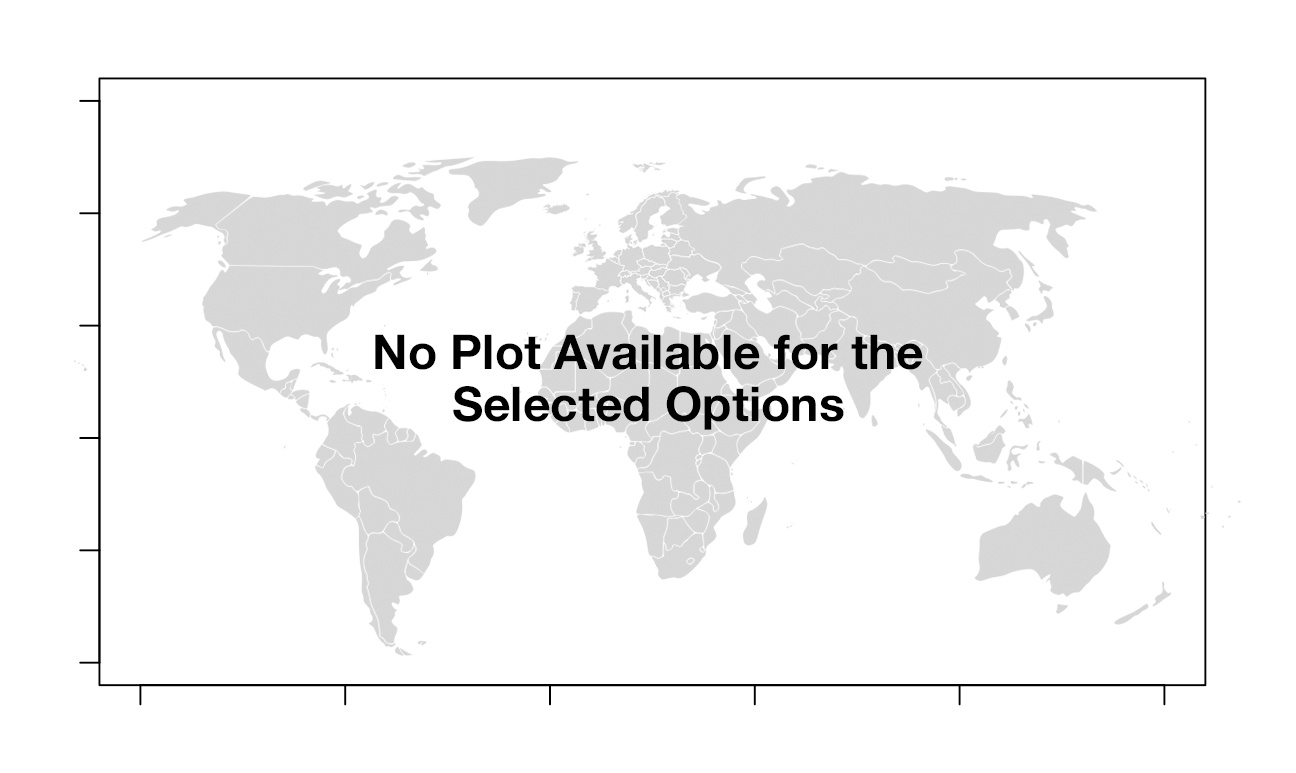Comparison of Different El Niño and La Niña Events
About This Tool: These plots give an indication of how similar and how different the atmosphere/ocean can be during El Niño and La Niña events over recent decades by month or season. Many variables are able to be compared.
 Added daily extremes using the 90th/10th percentiles of temperature and 90th of precipitation (more...).
Added daily extremes using the 90th/10th percentiles of temperature and 90th of precipitation (more...).

Details of Calculations
There are 3 types of plots. For the first set, for each dataset, a plot of anomalies (mean- climatology) is created for ENSO events within the time-period of the dataset. The months start in July before the peak of the event and end in June after the event. Events are selected largely using the ONI (or Niño 3.4 for years before the ONI is defined). In general, we tried to use matching events for different variables. In addition, the composite, or overall average of the anomalies for all events is created and plotted. Finally, the standard deviation of the anomalies is calculated and plotted so users can see where events tend to differ. Users can select El Niño or La Niña. For the 2nd summary plot, the first column are composite El Nino and La Nina plots as calculated in the first set. The second column plots show how similar events are to each other by shading grids where most or all of that particular grid has the same sign for the anomalies for the individual events. For ERA5 there are 9 events each for El Niño and La Niña. If 8 were above normal than the plot would be shaded for 8/9 or 89% of the events
The third type of plot looks at the number of days that are greater or less than a specified threshold in a month. For example there are plots of 2mT max for ERA5 that show the number of days greater than the 90th percentile of Tmax for each month. For the month of March which has 30 days, we would expect 3 such days on average. What is plotted is the number of days exceding that level. The very lowest categories (0,1) are shaded the opposite color and show regions where there are less than the expected days with the lowest value being 0. We may change the thresholds. Precipitation 90th percentile is defined using all daya (not just days with rain) for both the climtological number and each event. A monthly climatology is calculated. It is NOT adjusted for days within a month. Note, this is a beta product. Feedback is appreciated.
Event Definition
Events are defined by the DJF values of the NOAA Oceanic Niño Index (ONI) for a year. Plots display the ONI value so users can see if an event is stronger or weaker.
Datasets
The set of datasets we used are as follows:- ECMWF Reanalysis v5 (ERA5): 1940-near present
- Ocean Reanalysis System 5 (ORAS5): 1958-near present
- NCEP Global Ocean Data Assimilation System (GODAS): 1981-near present
- NClimGrid Observed Dataset: 1895-near present
- NOAA Extended Reconstructed SST V5: 1854-near present
- Permanent Service for Mean Sea Level (PSMSL) Tidal Gauge Data: varies. As early as 1807-2022
Discussion
One of the main issues with the anomaly plots is there is a strong trend in some variables such as 2m Temperature. This makes anomalies look warmer the later the event and can mask ENSO response to the climate at the time of the event.
Recently Added Features/Variables
 Added daily extremes using the 90th/10th percentiles of temperature and 90th of precipitation.
Added daily extremes using the 90th/10th percentiles of temperature and 90th of precipitation.
 Summary plots are available under "type". These show both the El Niño/La Niña composites and event consistency plots.
Summary plots are available under "type". These show both the El Niño/La Niña composites and event consistency plots.
 Added 10m vector winds/speed and 10m vector wind speeds over land.
Added 10m vector winds/speed and 10m vector wind speeds over land.
Future Additions
As we have the resources, we plan to add the following.- Composites of events before 1940, either using the 20CRV3 or some of the longer datasets such as NOAA ERSST.
- More dataset types such as biological datasets.